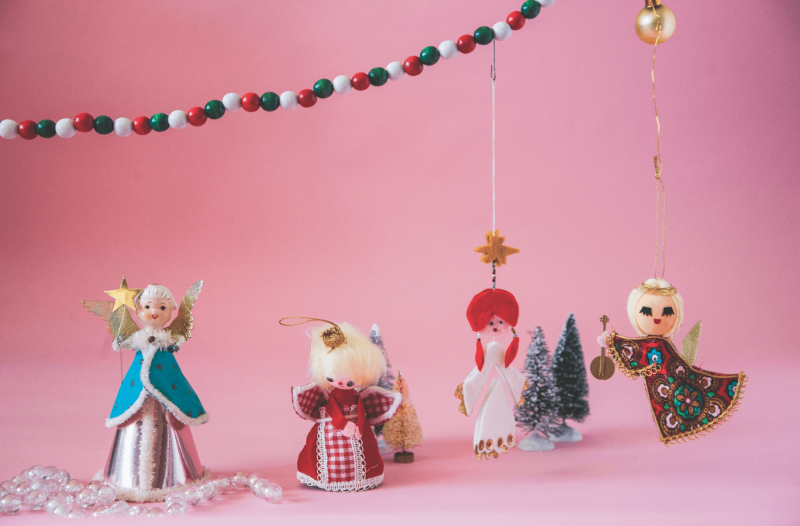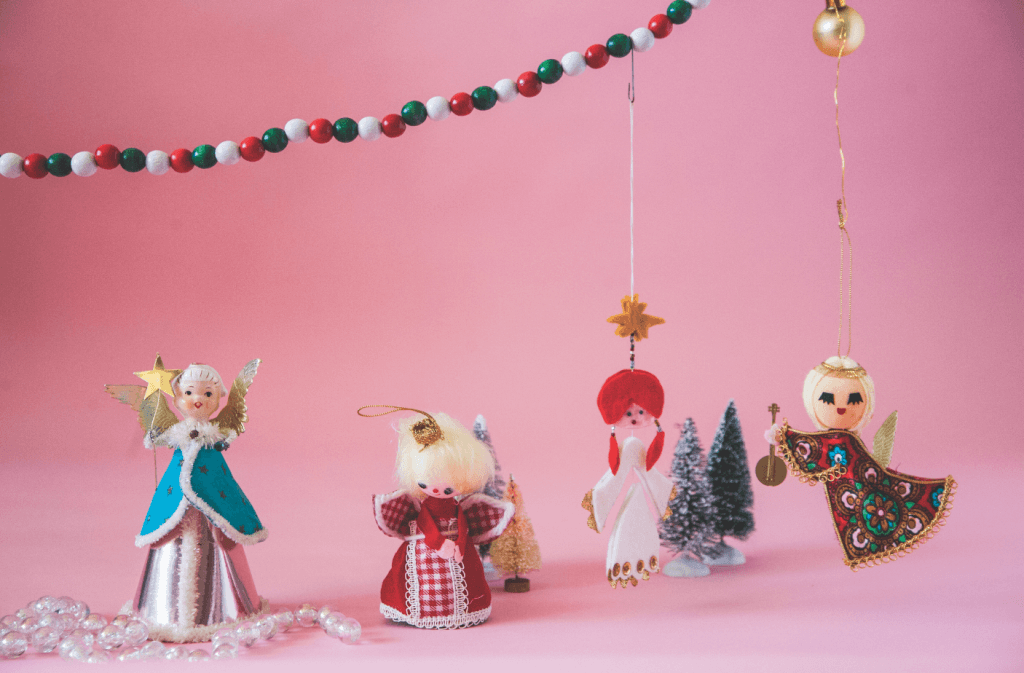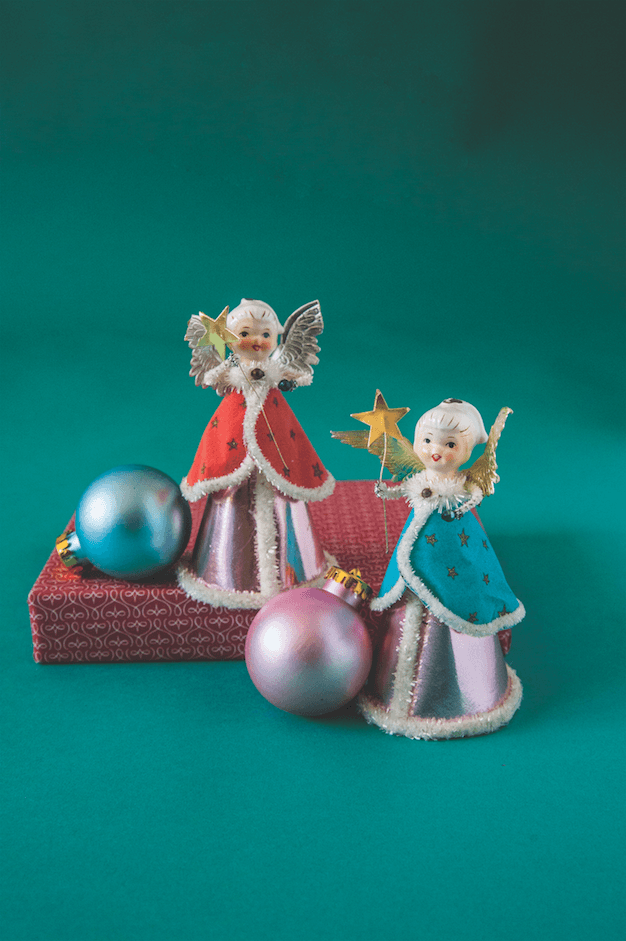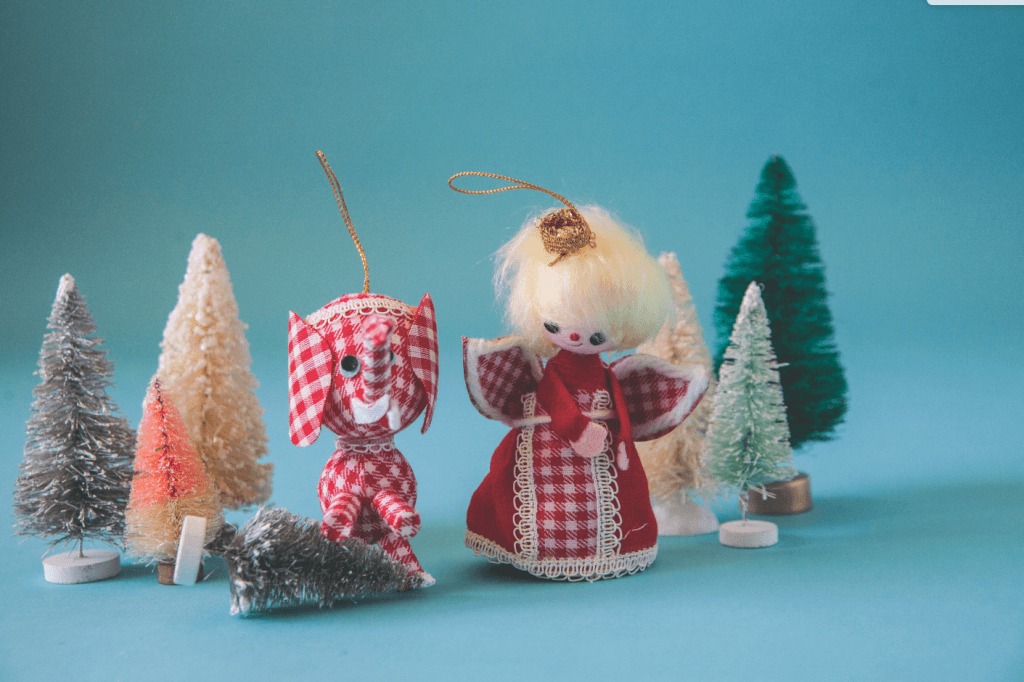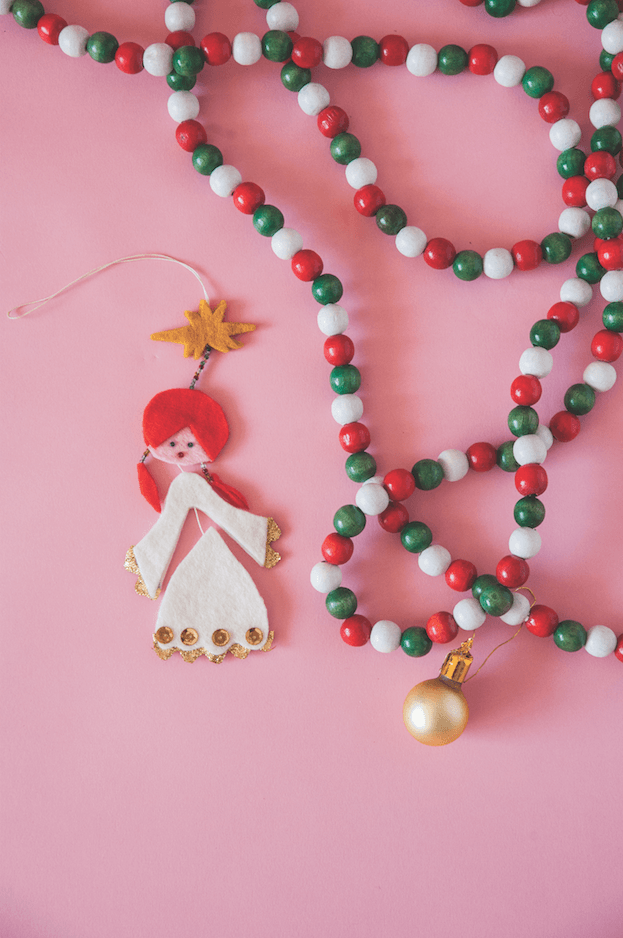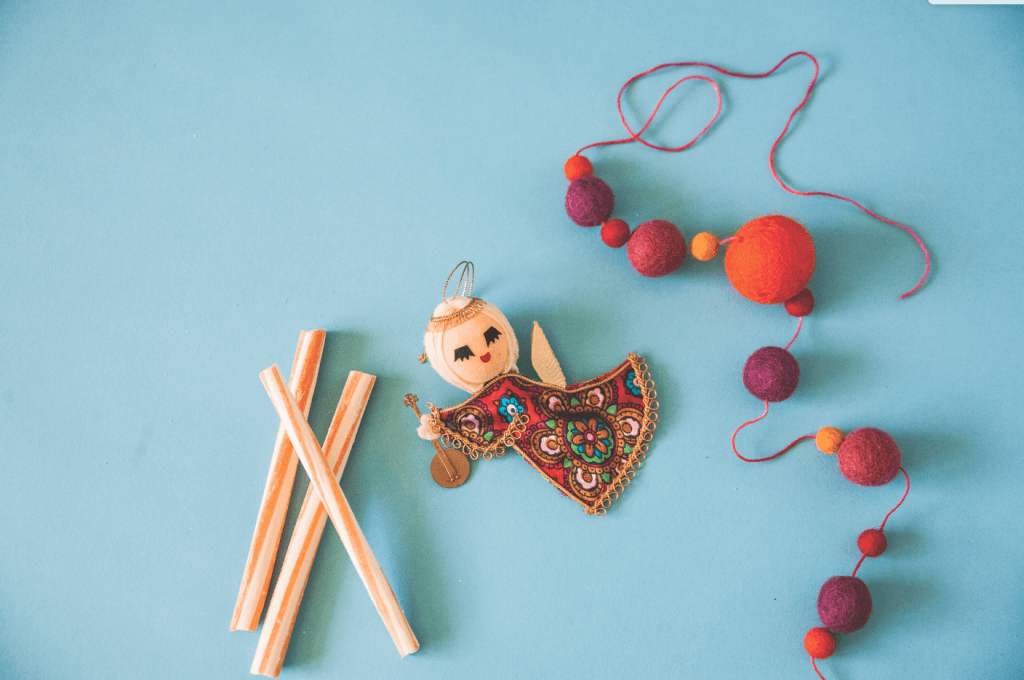When you find the type of collectible you love, it’s hard to resist accumulating more pieces. Vintage angels are a perfect Christmas collectible to acquire, and their shapes and statures have changed through the decades. “Collecting vintage angels is fun,” says Suzanne Allie of @JunkityFunkity30 on Instagram. “Each one has their own personality and they’re easy to find.”
Vintage Angels Through the Ages
1940s
Starting after World War I, Japan began to produce many toys and figurines, including Christmas angels. Even into the 1940s, these early Japanese angels often had celluloid or porcelain heads with other materials for the bodies and wings, such as paper and cotton. “These ones are stamped ‘Japan’ and thought to be Holt Howard,” Suzanne says.
Pro Tip:
“Watch for broken halos and wings that have been glued back on,” Suzanne says. This will lower the value of the piece. Also, keep your eyes open for angels holding various items, such as musical instruments and animals, she says.
1950s
By the 1950s, the post-war production boom had exploded, and you can find a wide variety of different types of angels. At this point, manufacturers had replaced most of the paper and cardboard on angels with fabric, and expanded the materials they used from celluloid and porcelain to wood and white metals. Look for the characteristic kitschy face on 1950s angels, with large eyes, rosy cheeks and expressive smiles.
Pro tip:
Keep an eye out for angels from Lefton, Napco and Holt Howard. “These are my three favorite manufacturers,” Suzanne says. They produced many angel figurines during the ’50s and ’60s, and by collecting from specific manufacturers, you can create a cohesive look among your angels.
1960s
Often, angel figurines from the 1950s and ’60s are lumped together because of their similarities, from materials to size and even personality. But also look for angels who are a little less traditional in their clothing, and who have grown in stature from the plump, round angels of the ’50s to more tall and skinny angels from the ’60s.
Pro Tip:
Don’t restrict yourself to angels from larger manufacturers. Even if a piece doesn’t have a manufacturer or location stamp, it can still be a perfect addition to your vintage collection. This angel was handmade in the ’60s by a housewife and has all the characteristics of a 1960s angel.
1970s
By the ’70s, manufacturers started to branch out from the traditional angels to ones that incorporated more modern-day fashion and character. You’ll find angels holding items such as sports equipment and with racial diversity as well as angels that resemble popular characters, such as Miss Piggy from The Muppets.
Pro Tip:
Vintage angels are fun to collect and should be reasonably priced. “Expect to pay no more than $20 for one,” Suzanne says. Unless the piece is very rare (check sites like eBay and Etsy to find information on specific angels), you shouldn’t have to break the bank to add an angel to your collection.
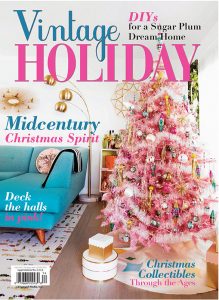
Want more?
If you like the idea of adding a Mid Century vibe to your Christmas home this year, check out our sister magazine’s annual special, Vintage Holiday. It has information on Christmas collectibles and home tours to get your MCM inspiration flowing.

